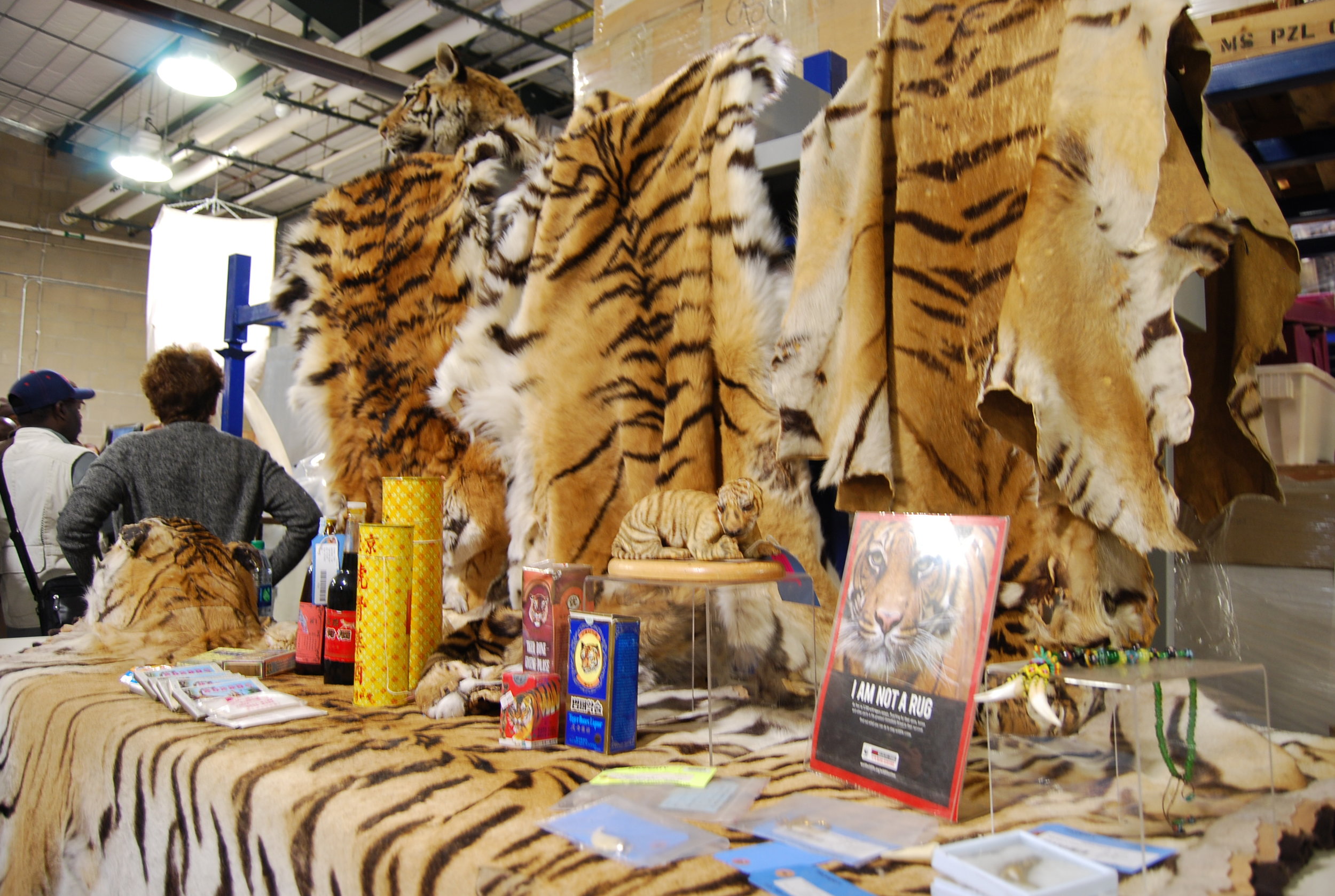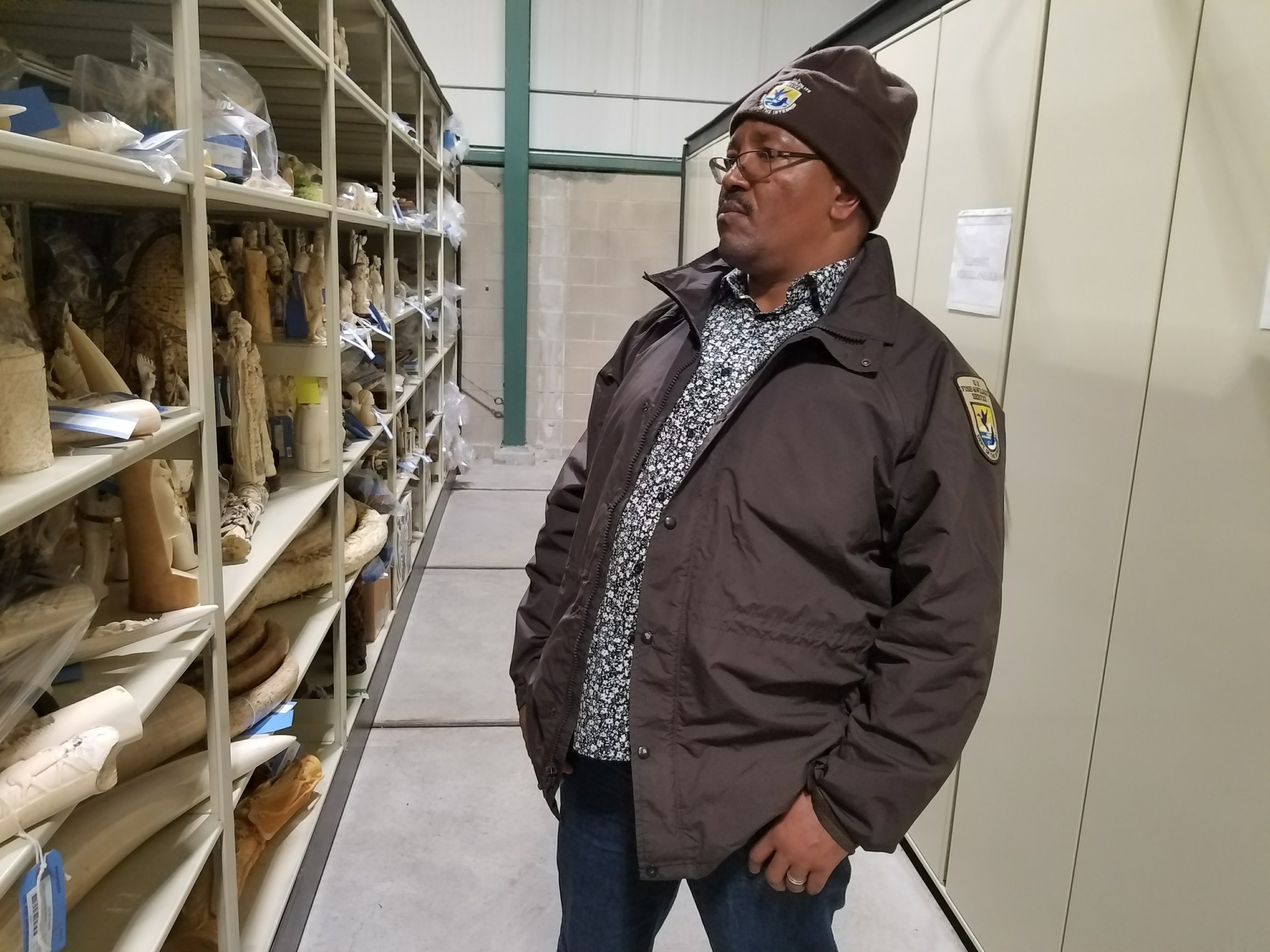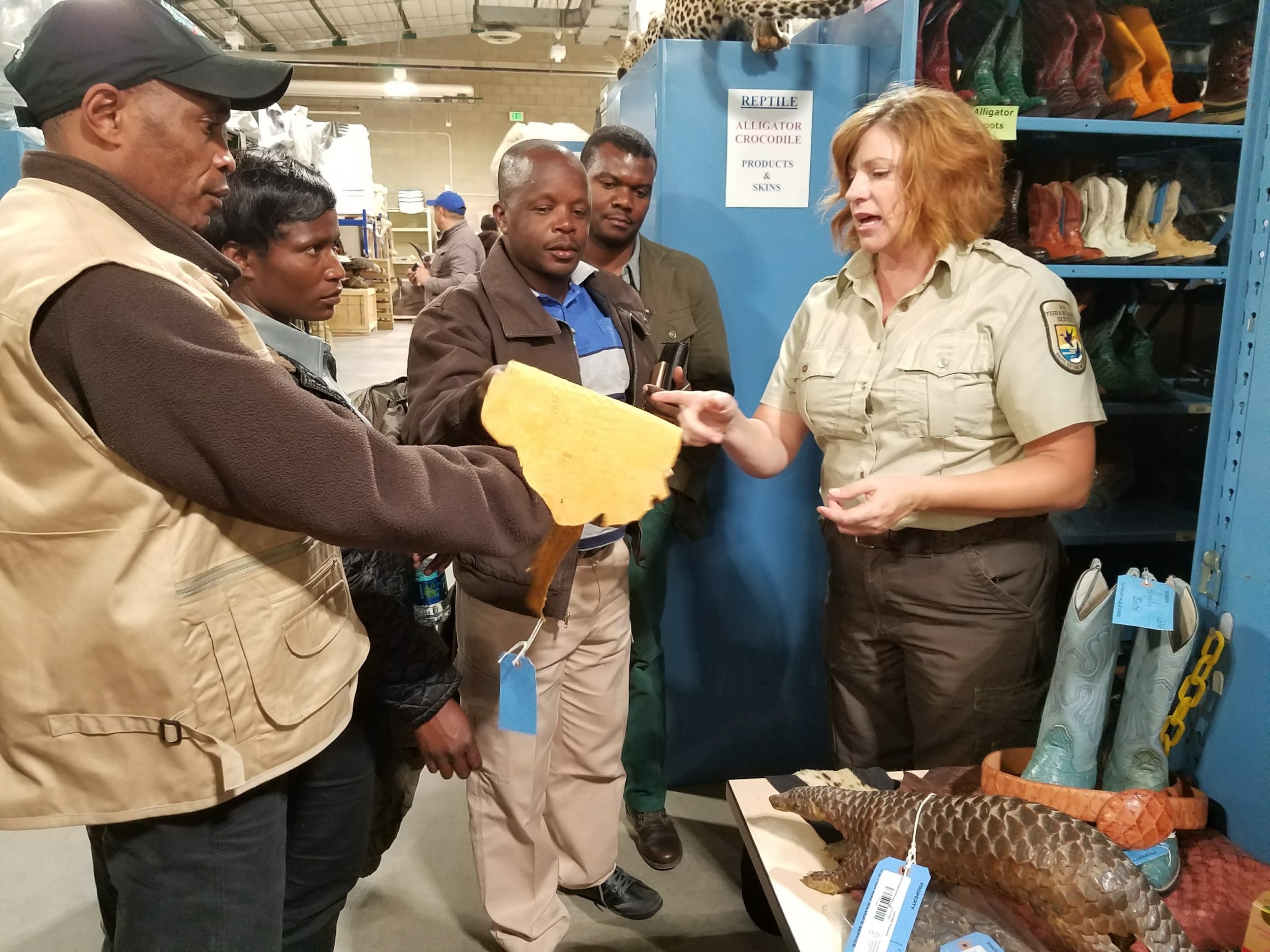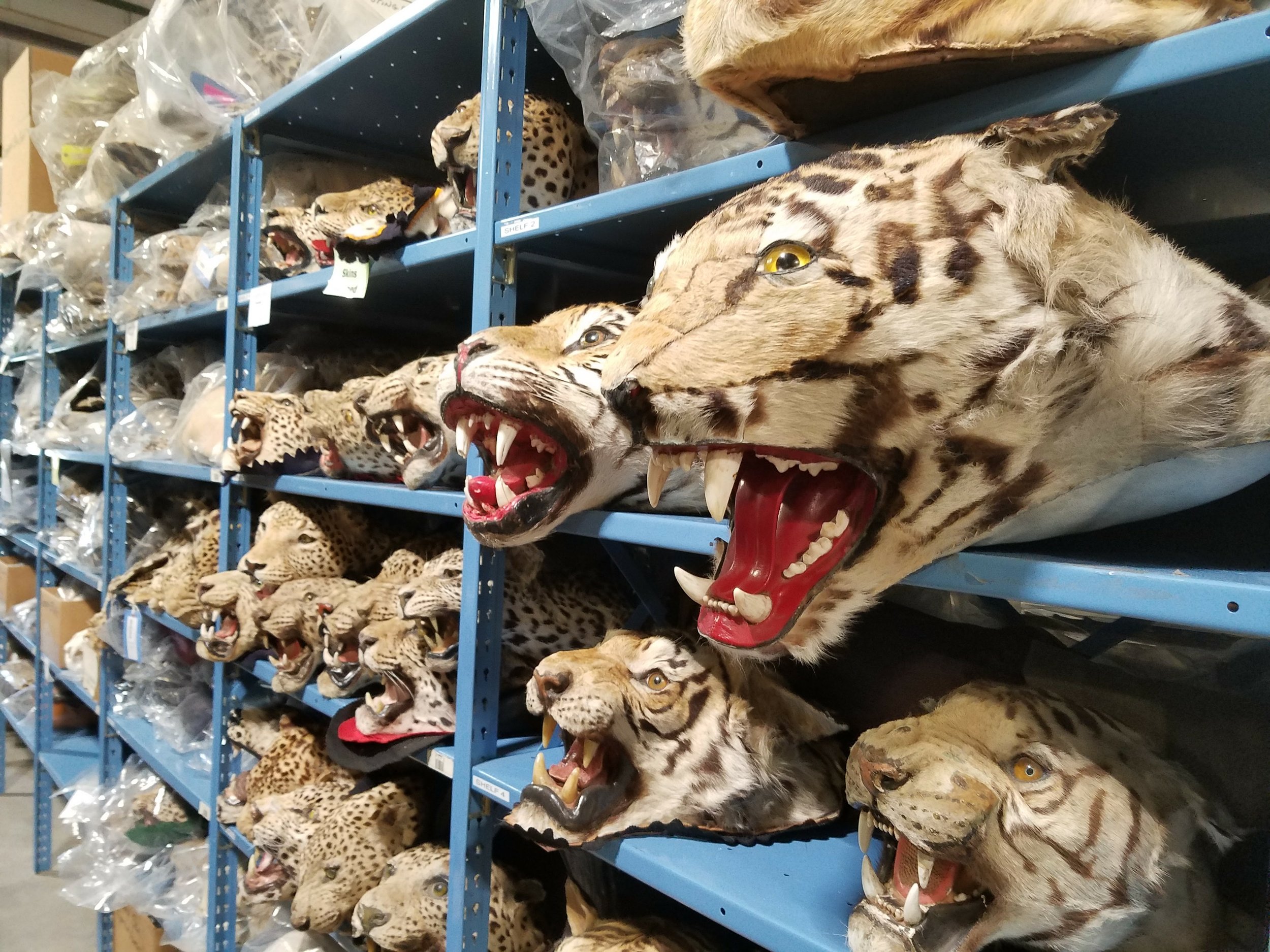Colonel Mamadou Bhoye Sow, one of Guinea’s top conservation officials, could not believe his eyes as he walked through a U.S. Fish & Wildlife Service (USFWS) warehouse stuffed with wildlife products confiscated from international smugglers.
Hundreds of pairs of boots made from pythons and other reptiles.
Three-foot ivory tusks, figurines carved from ivory, foot stools made from elephant legs, and boots and carrying cases made from elephant skin.




Dozens of preserved sea turtles stacked on shelves, purses made from frogs; boxes of coral; heads of bears, leopards, jaguars and other big cats; and thousands of exquisite rare butterflies and insects.
Tiger mounts, rhino mounts, fur coats and rugs, and hundreds of tubes of face cream made from sturgeon eggs. Products billed as aphrodisiacs from tiger parts and “hangover cures” from rhino horn.
1.3 million pieces in all, and much of it from wildlife species at risk of extinction in the countries where they came from and globally.
“My first reaction was I was extremely shocked,” said Colonel Sow through an interpreter. “The quantity was so huge there was something industrial about it. If you had so many people poaching that way, I could see all the biodiversity disappearing.”
He was most saddened and embittered, he said, by the elephant products.
“When I think of an elephant and all of the time it needs to reproduce and survive—I wonder how I will be able to help save it,” said Sow, deputy director generation of Guinea Parks and Reserves. “The trafficking is so fast. I do not know how long the elephants will survive.”
Colonel Sow and 41 other African law enforcement and wildlife officials working on the front lines to save endangered wildlife in their countries toured the U.S. Fish & Wildlife Service’s National Wildlife Property Repository on Sept. 16th as part of the International Conservation Chiefs Academy they’re attending.
The 22,000-square foot office and warehouse northeast of Denver, Colorado, at the Rocky Mountain Arsenal National Wildlife Refuge was the last educational stop in a day focused on best practices for collecting, analyzing and storing evidence seized in illegal wildlife trafficking.
What Colonel Sow and his colleagues were seeing is only a tiny fraction of what USFWS wildlife inspectors seize every year at each one of the 37 U.S. ports, says Coleen Schaefer, the facility supervisor and tour leader.
“We’re a huge consumer nation,” she said. “I would not have a single wildlife product in this warehouse if not for someone in the U.S. importing them.”

